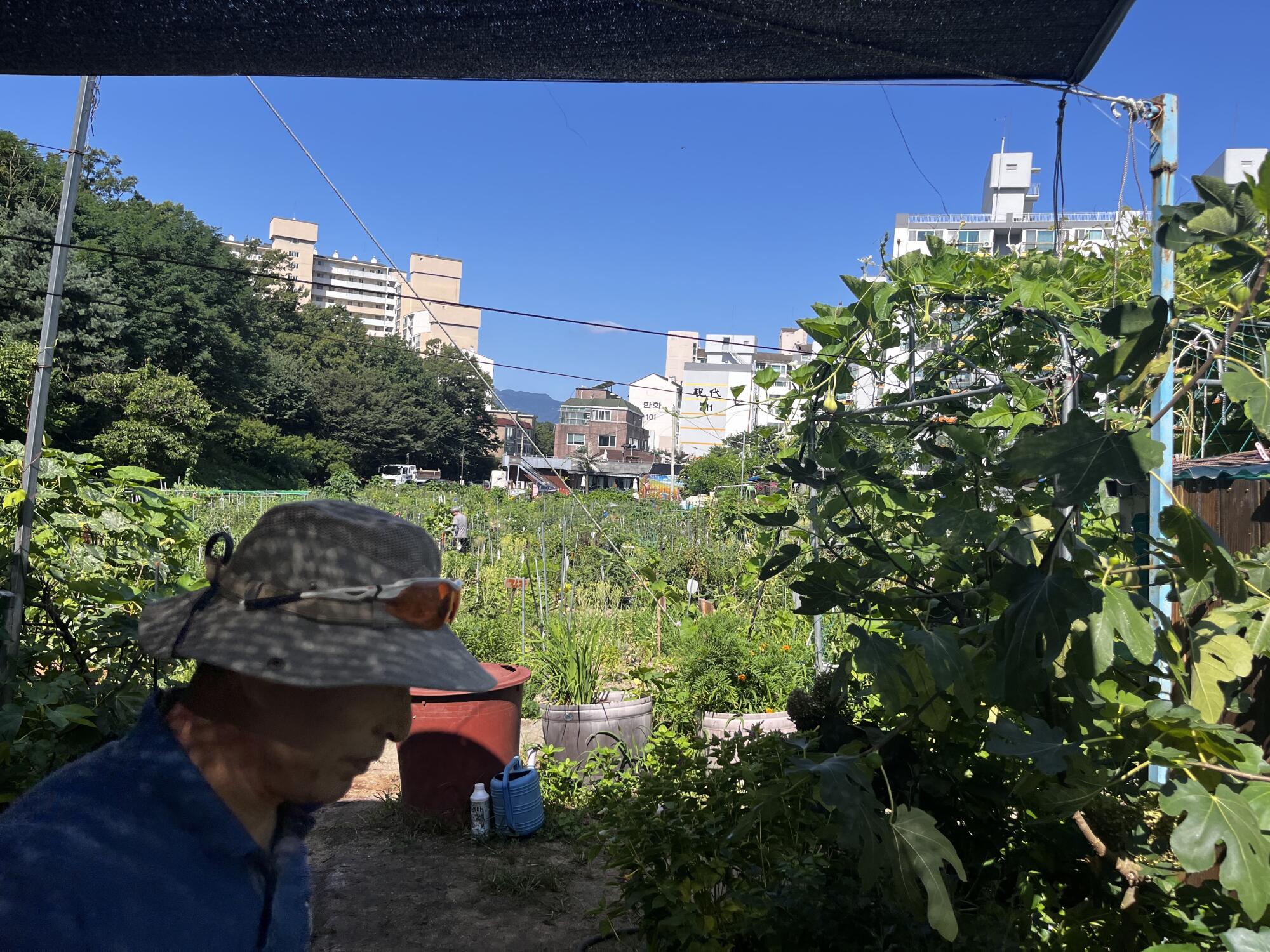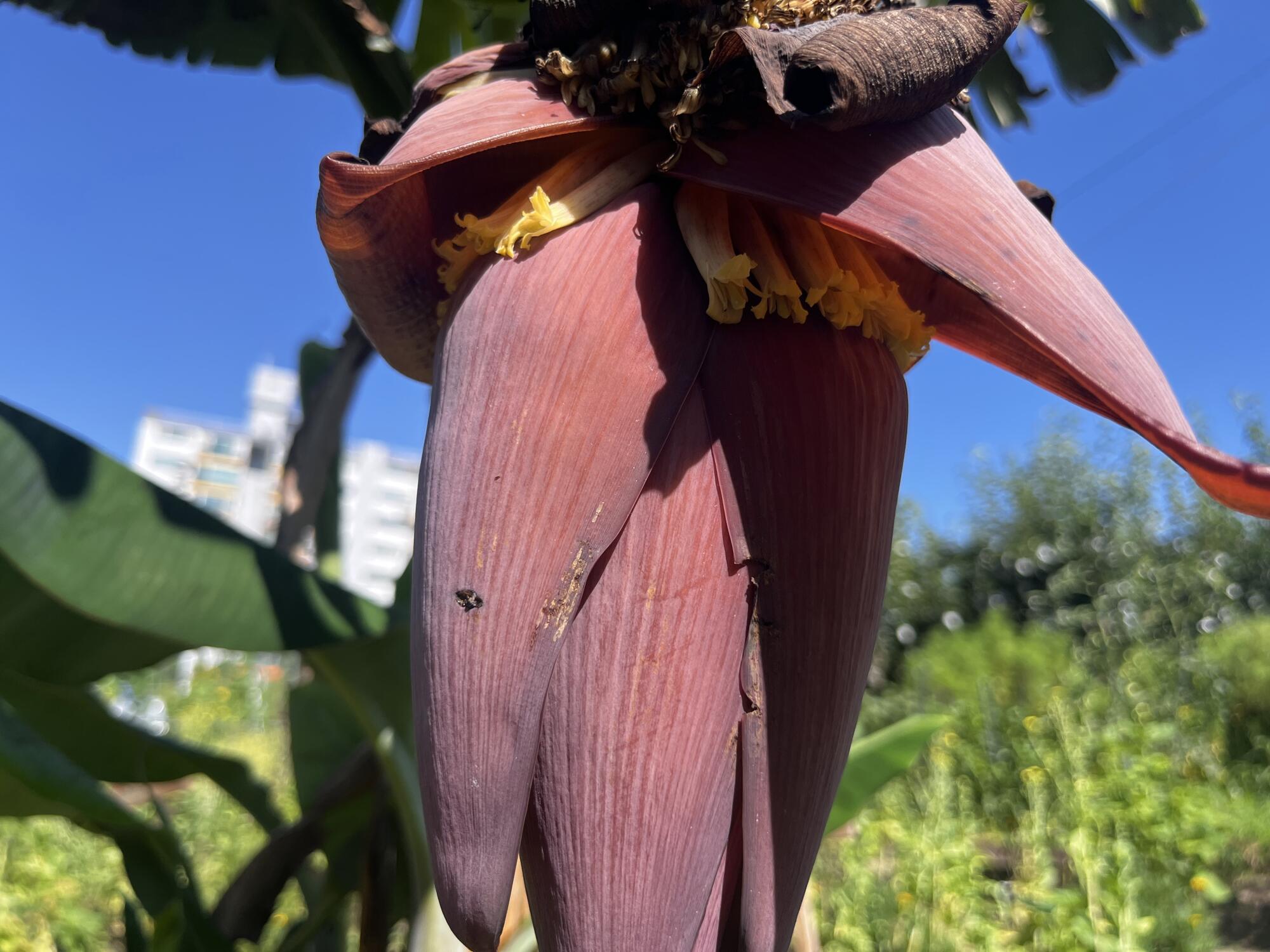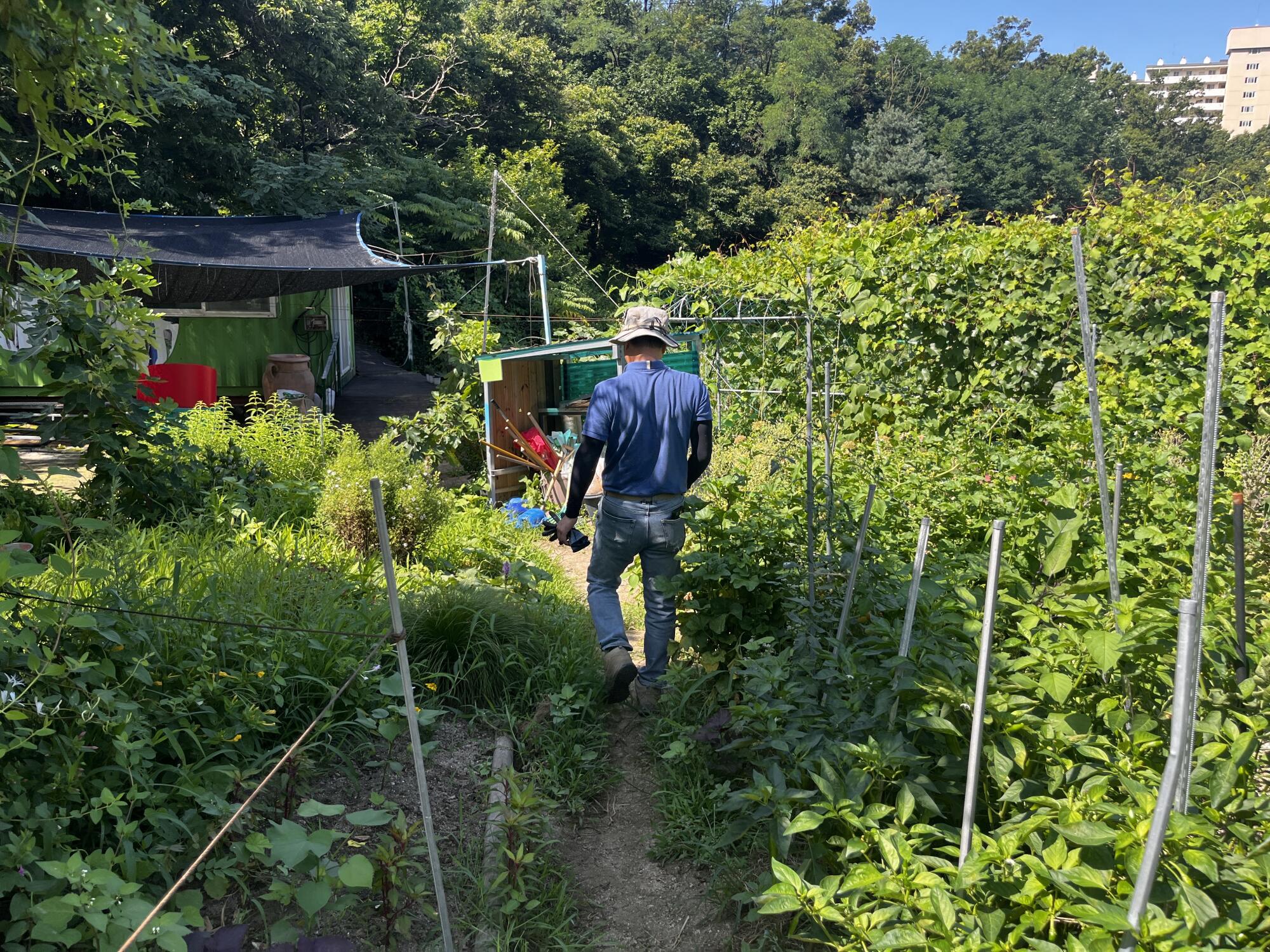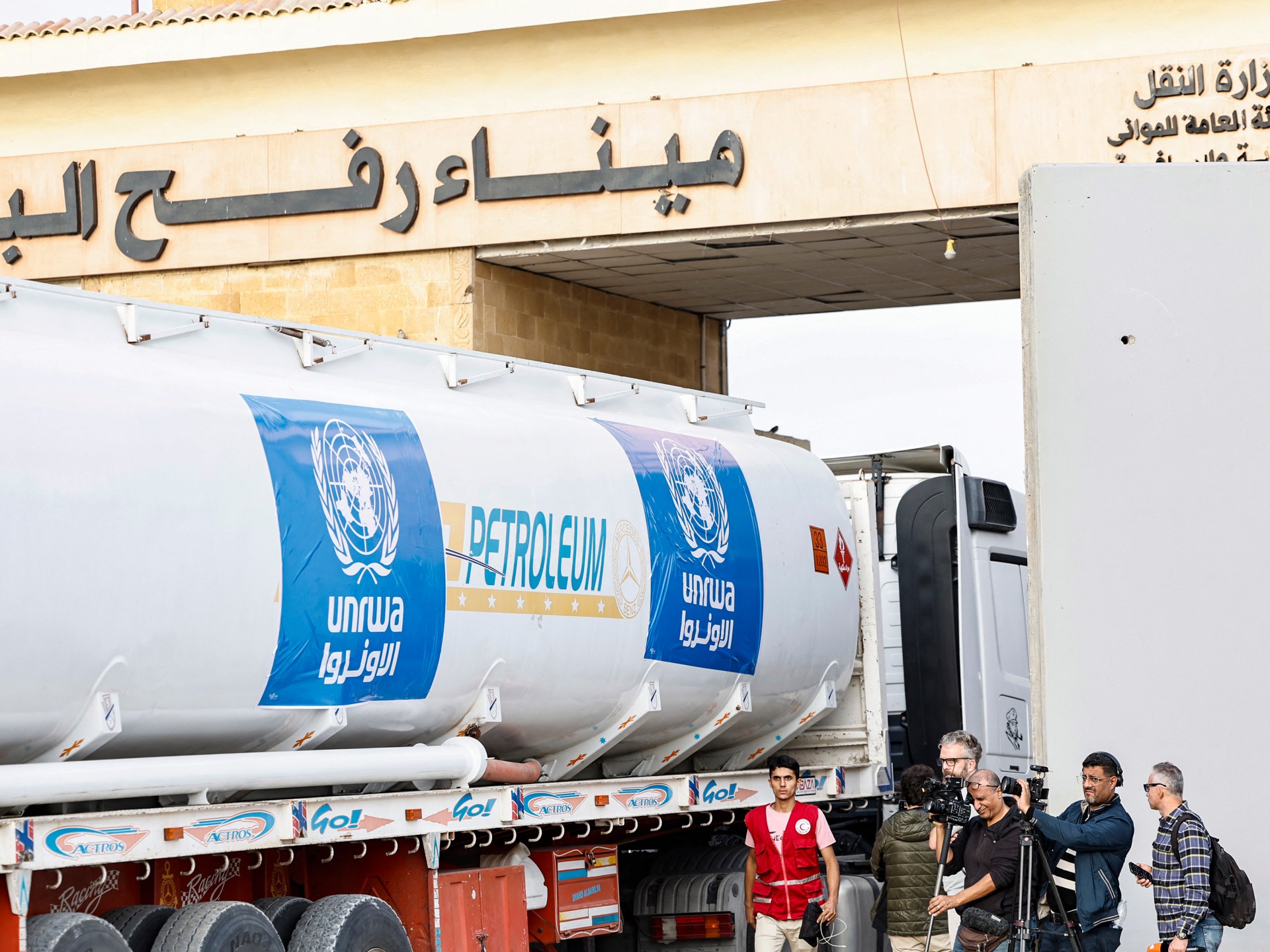As a math teacher, Oh Young-rock used to joke to his students that one day South Korea's temperate climate would become so tropical that bananas would grow on mountains and monkeys would swing from trees.
This summer it seemed to him that his prophecy was coming true.
Ten years ago, after leaving teaching to start a landscaping business, Oh planted a banana sapling given to him by a friend at a community farm he helped manage in northern Seoul. Each winter, he would move it indoors before planting it outside again in the spring.
It took seven years for the plant to flower. In late June, the flowers finally gave way to a mass of curled green fingers – the unmistakable shape of a bunch of bananas.
Banana trees growing in northern Seoul became a sensation after an article in a local newspaper.
(Max Kim / Los Angeles Times)
“I'm almost certain this is the first case of a banana plant bearing fruit outdoors in Seoul,” Oh said.
In early July, after sharing the news with a local newspaper reporter—who published an article titled “Not in Southeast Asia but in Seoul… Banana plant bears fruit at weekend farm”—green bananas became a minor overnight sensation.
“This is visual evidence of rising temperatures on the Korean Peninsula,” Oh told reporters.
Dozens of people visited the farm every day, whispering in awe, “It’s here.” Parents took photos with their children. One woman traveled more than an hour from another city and stood shyly near the entrance before telling Oh she had come to see the bananas.
On a hot mid-July morning at the community farm, a patch of lush green surrounded by high-rise apartments, Oh inspected the progress of her bananas: still green, but noticeably plumper.
“It’s hard to just be happy about it, considering it’s a sign of climate change,” he said.
“We have the bananas. Now we just need the monkeys.”

Oh Young-rock works at the community farm he helps manage, an area of lush greenery surrounded by high-rise apartment buildings.
(Max Kim / Los Angeles Times)
Food systems around the world are already being disrupted by climate change.
Rising temperatures have contributed to increasingly severe droughts in many countries, with many of the hardest hit in Africa, where yields of staple crops such as maize have been decimated and hunger is on the rise.
For countries like Russia, warming has been partly a blessing, freeing up tracts of land that were previously too cold for farming and helping the country become the world's largest wheat exporter.
It is a stark example of how agricultural systems, transformed by global warming, can have profound geopolitical consequences: Russia has used its grain primacy to gain advantages in its war against Ukraine and to expand its presence in Africa, which has long depended on it for wheat.
In South Korea, a country slightly larger than Indiana, rising temperatures are driving production of fruits such as apples and clementines northward, as well as spurring the commercial cultivation of tropical fruits.
Although South Korea has for decades imported most of its bananas from Southeast Asia, those grown locally in greenhouses are coming back into fashion now that farmers can spend less on heating costs.
“Most Koreans probably don’t personally feel the effects of climate change yet because everyone has air conditioning,” Oh said.
“But we farmers do it because we can see how our plants respond to these changes.”
Meanwhile, the elusive outdoor-grown banana has become something of an urban legend that speaks to deeper anxieties about the climate: a strange sign that the natural order has been disrupted.
But until now it has only existed in the headlines.
In June 2017, a local Facebook page in the southeastern city of Daegu posted photos of a banana plant bearing fruit in front of a residential house with the caption: “Honestly, it's a little scary.”
Several major media outlets rushed to interview the owner, who speculated that it might have been because that May was unusually hot. A local agricultural official wondered if the city might one day be able to mass-produce bananas outdoors.
Two more banana trees were spotted that year: one in the southwestern city of Gwangju and another in the island province of Jeju.

The banana flower.
(Max Kim / Los Angeles Times)
But all three turned out to be false alarms.
In a press release issued to address the sightings, the country's agricultural authority stated that these were likely hardy bananas, a non-edible ornamental cultivar that grows easily in colder climates and is distinguished by the yellow hue of its flower buds rather than the reddish color of those of edible tropical varieties.
The statement noted that South Korea's climate is still too cold for edible bananas to grow outdoors.
“I put a lot of effort into fertilizing it because I wanted to try eating a banana that I grew myself,” one disappointed owner told reporters.
But Oh's bananas were definitely of the edible variety.
The friend who had given him the banana plant had told him that it was a Cavendish, the tropical variety most commonly consumed today. This was confirmed by the flower bud, which was red.
And since three hardy banana trees were spotted seven years ago, South Korea has experienced several episodes of record-breaking heat. June was officially the hottest month on record.
Was Oh's bunch of bananas really a sign that a critical turning point had finally been reached?
Not so fast, says Kim Seong-cheol, a climate change researcher at the National Institute of Horticultural and Herbal Sciences in Jeju Province.
“If you bring the banana plant indoors during the winter and only bring it out when it's warm, it's pretty much the same as growing it in a greenhouse,” he explained.
“Commercial banana greenhouses here also do not receive artificial heating in summer.”
While it's true that this summer's higher temperatures likely played a role in Oh's banana finally bearing fruit after a decade of dormancy, he stressed that an edible banana grown entirely outdoors in South Korea remains “absolutely impossible.”
As climate science suggests, extreme cold will continue to occur even as overall temperatures rise. The average minimum temperature in Seoul in January was around -2.5 degrees Celsius, enough to ruin any outdoor banana plant.
“For a banana to grow outdoors here, it means the temperature would have to be a minimum of 15 degrees Celsius (59 Fahrenheit) throughout the winter,” Kim said.
“But the day that happens, the summer will be so hot that we will all die. Or we will live underground.”
By mid-July, the flow of visitors had slowed and it was just Oh and his bananas.
Regardless of what they did or did not prove, the amateur botanist in him had diligently cared for the plant, feeding it amino acid fertilizers.

Oh Young-rock walks among the crops in the community garden. Regardless of what the green bananas do or do not show, he said, he does not believe it is a good sign that the tree is bearing fruit.
(Max Kim / Los Angeles Times)
“I think I should read and study more about them,” he said.
Still, Oh couldn't shake the feeling that something wasn't right.
“The only thing that is certain is that the fact that the banana plant bears fruit is not a good thing,” he said.
“It is at least a small sign that people have done too much damage to the Earth in pursuit of their own interests. I just hope that a bigger sign does not appear.”
The sun was beating down hard.
And Oh scrunched up the dirt around his plant, wondering if the bananas would taste good.












